Back in December, the NSW Audit Office released its annual snapshot, which revealed that public transport use is soaring across Sydney placing even more strain on crowded trains and buses, which rarely run on time:
…patronage across the public transport network increased by 12 per cent last financial year.
…the Audit Office also highlighted the failure of buses, in particular, to run on time…
“The continuing rise in patronage increases pressure on public transport crowding, punctuality and capacity,” the report said…
The Auditor-General’s snapshot also highlights the crowding pressures on trains and buses…
Now, the NSW Auditor-General has warned that Sydney’s trains will increasingly struggle to run on time unless “sustained and substantial investment” is made in the existing heavy rail network. From The SMH:
While a new $20 billion metro rail line and upgrades to the train fleet will help, the Auditor-General found that rail patronage growth was nevertheless outstripping both the government’s forecasts and the rail system’s capacity to cope.
…the Auditor-General said it was likely that by 2019 there will be “virtually no scope to run additional trains through the city”, increasing the risk that over-crowded trains will not be able to run according to their timetable.
When it developed plans for the train system in 2011, Transport for NSW predicted rail patronage would grow by 3.3 per cent a year. But patronage has grown by 4.3 per cent per year since then, and for the past two years has increased by 6.6 per cent.
“If recent higher than forecast patronage growth continues, the network may struggle to maintain punctuality before 2019,” the Auditor-General’s report said…
“There is a significant risk that investments will not be made soon enough to handle future patronage levels,” it said. “Ideally, planning and investment decisions should have been made already.”
Hardly a surprise, is it? The crush-loading of infrastructure in Sydney (as well as Melbourne) is the direct result of the dysfunctional mass immigration ‘Big Australia’ program being run by the federal government.
It is this mass immigration program that has seen Sydney’s population balloon by 821,000 people (20%) in just 12-years, with Melbourne’s population ballooning by 1 million people (a 27% increase):
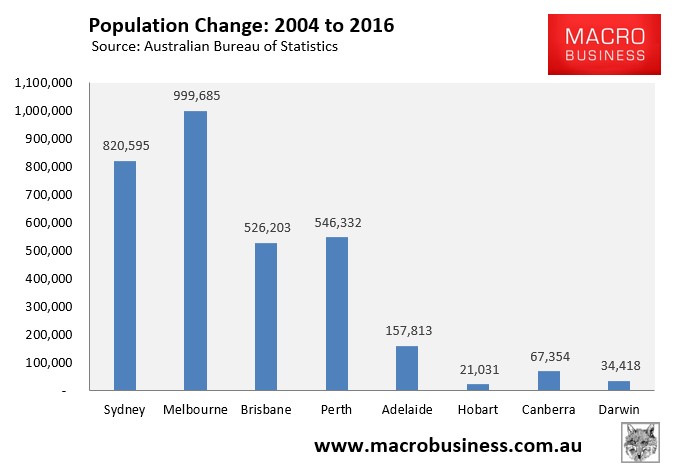
Sydney’s population is also projected to balloon by 87,000 people a year (1,650 people a week) for the next 20 years – equivalent to adding 4.5 Canberra’s to Sydney’s population:
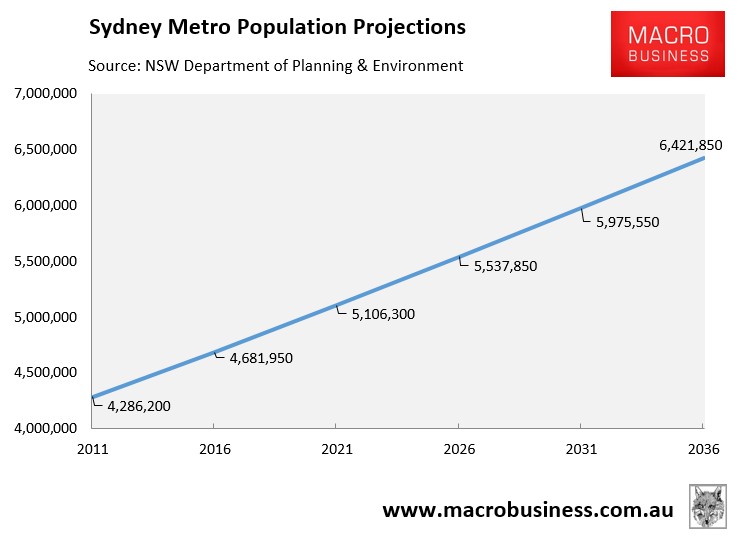
Sydney’s road system, too, is struggling under the weight of the population influx.
Infrastructure Partnerships Australia’s latest report found that road network “efficiency” has followed the level of population growth. Melbourne, the population growth leader, has suffered the greatest efficiency loss, followed by Sydney (see below graphics).
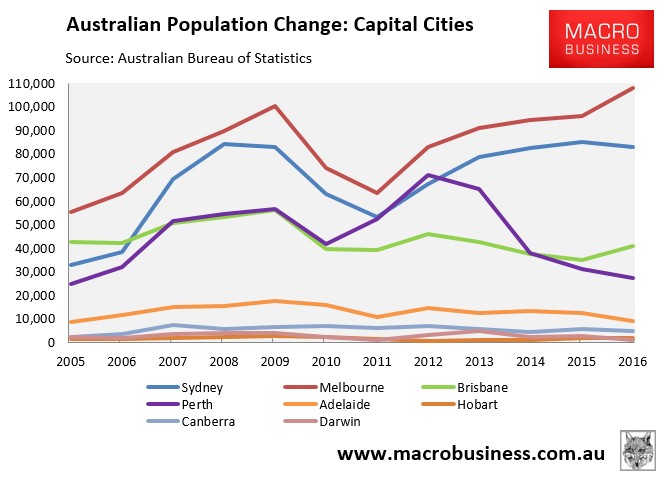
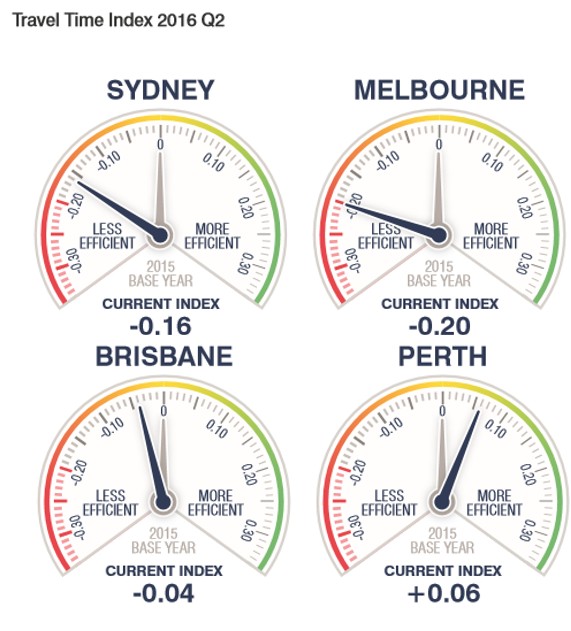
The Bureau of Infrastructure and Regional Economics also forecasts soaring costs of congestion, particularly in Sydney and Melbourne, over the next 15 years as their populations continue to boom:
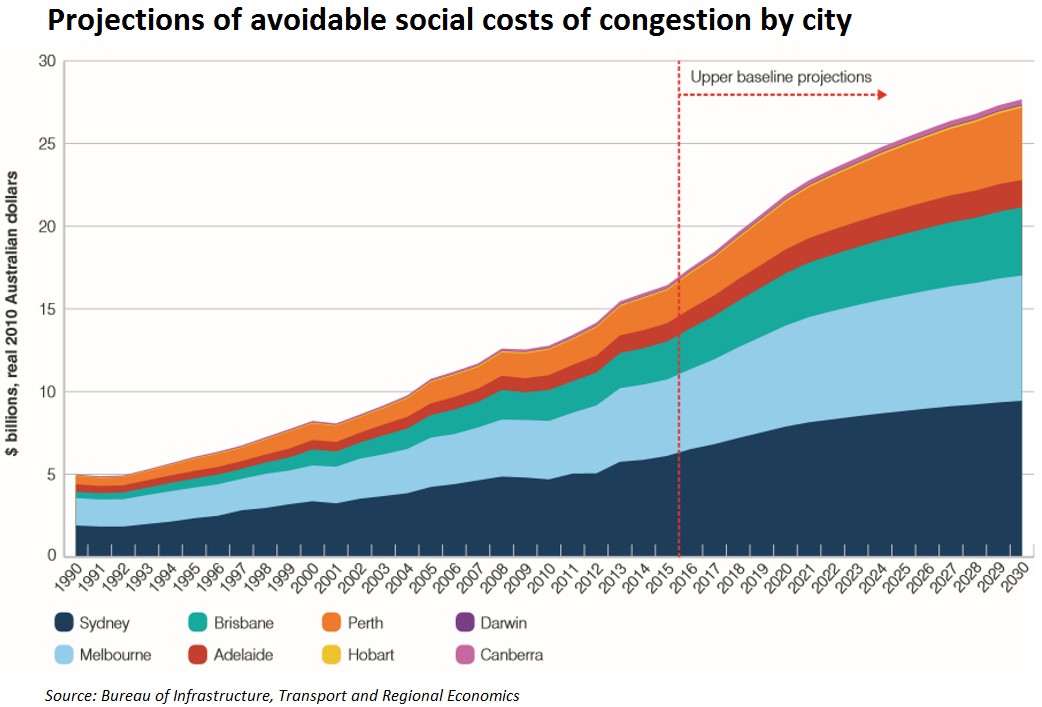
All of this reminds me of former Treasury Secretary, Ken Henry’s, speech in February, which noted how infrastructure in the major capitals is failing dismally to keep pace with the immigration-fueled population growth, worsening congestion and housing affordability:
Even with strong growth in the size of government and public debt, we do not have the infrastructure capacity to support today’s population, far less the population of the future.
How will we fund the biggest infrastructure build in our history? And what about infrastructure planning?…
On the basis of official projections of Australia’s population growth, our governments could be calling tenders for the design of a brand new city for two million people every five years; or a brand new city the size of Sydney or Melbourne every decade; or a brand new city the size of Newcastle or Canberra every year. Every year.
But that’s not what they are doing. Instead, they have decided that another 3 million people will be tacked onto Sydney and another 4 million onto Melbourne over the next 40 years.
Already, both cities stand out in global assessments of housing affordability and traffic congestion.
Blind Freddy can see the direct link between excessive population growth (immigration) and the strains on infrastructure, housing, the environment and living standards. The obvious solution to alleviate these pressures is to cut net overseas migration back to the historical average of 70,000 people a year:
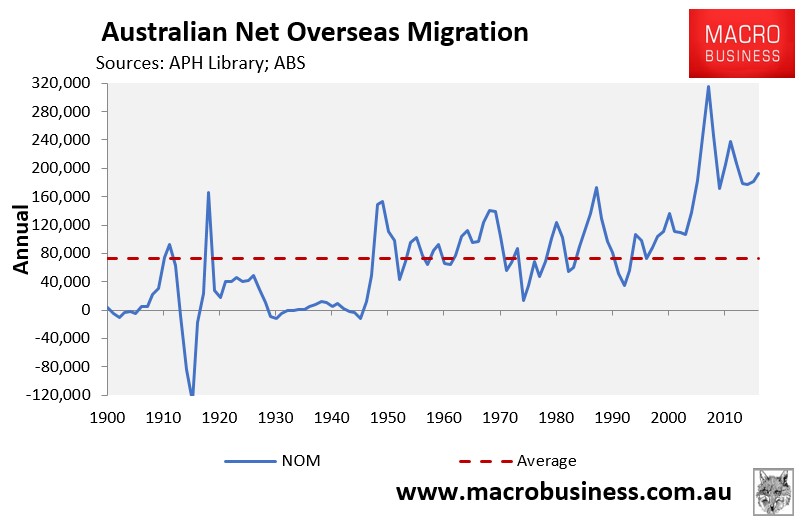
This would give infrastructure and housing a chance to catch-up, as well as take pressure off the environment. It’s a policy no-brainer.

